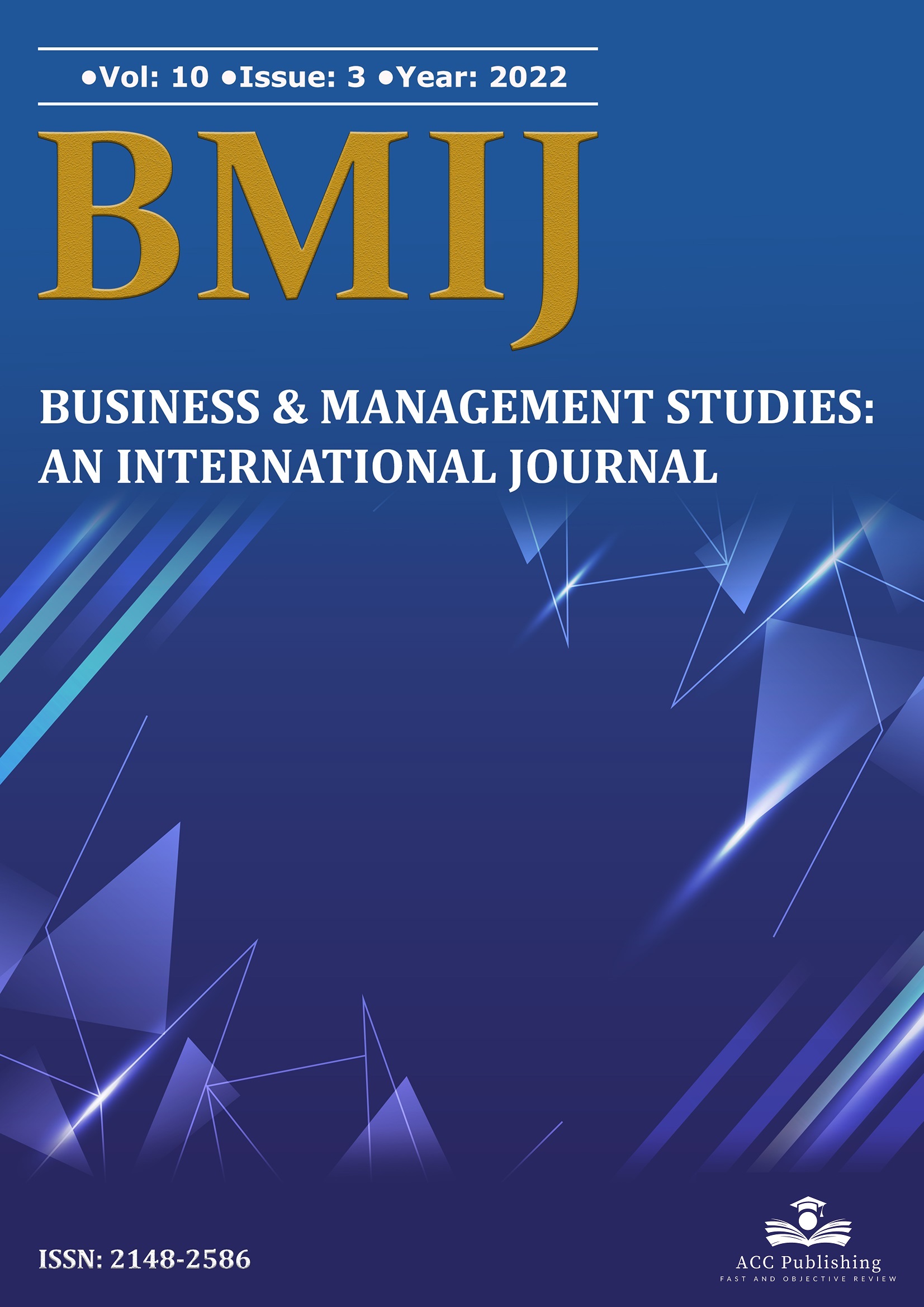Determining the relationship between financial inclusion and financial stability: An application for Iraq

Published 2022-09-25
Keywords
- Financial Inclusion, Financial Stability, ARDL Bounds Test
- Finansal İçerme, Finansal İstikrar, ARDL Sınır Testi
How to Cite
Copyright (c) 2022 Melek YILDIZ- Kareem Qasım Awadh AWADH

This work is licensed under a Creative Commons Attribution-NonCommercial-NoDerivatives 4.0 International License.
Abstract
This study aims to determine the relationship between financial inclusion and financial stability in Iraq by applying the ARDL bounds test. The dependent variable of the study is the financial stability index (FIE), and the independent variables are the number of ATMs (ATM), banking diffusion (BYA), banking density (BYO), credit depth (KD) and deposit depth (MD). However, since there is a high correlation between BYA and BYO, two different models were established in the study. According to the analysis results of both models, a negative relationship was found between FIE and ATM in the short and long run. Again, as a result of the analysis of both models, it was determined that there is a negative relationship between FIE and KD in the short run. On the other hand, in the first model, it is understood that there is a long-run positive relationship between FIE and KD. Finally, in the second model, it was observed that there was a long-run positive relationship between FIE and MD.
Downloads
References
- Ahamed, M. M. & Mallick, S. K. (2019). Is financial inclusion good for bank stability? International evidence. Journal of Economic Behavior & Organization, 157, 403–427.
- Al-Humairi, G. T. M., DubaiAbdulmahdiAl-Jubouri, A., & Mahmood, E. A. (2020). The effect of financial inclusion on enhancing financial stability in Iraq for the period (2004-2018). PalArch's Journal of Archaeology of Egypt/Egyptology, 17(6), 10189-10203.
- Amatus, H., & Alireza, N. (2015). Financial inclusion and financial stability in Sub-Saharan Africa (Ssa). International journal of social sciences, 36(1), 2305-4557.
- Barik, R., & Pradhan, A. K. (2021). Does financial inclusion affect financial stability: Evidence from BRICS nations?. The Journal of Developing Areas, 55(1), 341-356.
- Central Bank of Iraq, (2020). Financial Stability Report 2004-2020, https://cbi.iq/news/view/494 , (Date of Access: 11.04.2022).
- Central Bank of Iraq, (2020). Annual Statistics Bulletin 2004-2020, https://cbi.iq/news/view/492 , (Date of Access: 11.04.2022).
- Demirgüç-Kunt, A., Klapper, L. F., Singer, D., & Van Oudheusden, P. (2015). The global findex database 2014: Measuring financial inclusion around the world. World Bank Policy Research Working Paper, 7255, p.1-97.
- El-Obaidi, A. F. M. (2021). The relationship between financial inclusion and financial development and its role in promoting economic growth in Iraq. (Unpublished PhD Thesis). Faculty of Management and Economics, Anbar University, Iraq.
- Feghali, K., Mora, N., & Nassif, P. (2021). Financial inclusion, bank market structure, and financial stability: International evidence. The Quarterly Review of Economics and Finance, 80, 236-257.
- Hamza, H. K. & Abdulhamid, G. R. (2012), The Iraqi Stock Exchange, its inception - analysis and evaluation of its indicators. Kufa Studies Center Journal, 1(24), 255-284. Access: https://journal.uokufa.edu.iq/index.php/ksc/article/view/4715/4344,(Date of Access: 13.04.2022).
- Hannig, A., & Jansen, S. (2010). Financial inclusion and financial stability: current policy issues. ADBI Working Paper, No. 259, Asian Development Bank Institute (ADBI), Tokyo.
- Iqbal, B. A., & Sami S. (2017). Role of Banks in financial ınclusion in India. Contaduría y administración, 62(2), 644–656.
- Iraq Stock Exchange Reports 2006-2020, Access: https://www.isc.gov.iq/index.php?do=list&type=report&xtype=year, (Date of Access: 11.04.2022).
- Malik, A. H., bin Md Isa, A. H., bin Jais, M., Rehman, A. U., & Khan, M. A. (2022). Financial stability of Asian Nations: Governance quality and financial inclusion. Borsa Istanbul Review, 22(2), 377-387.
- Morgan, P., & V. Pontines. (2014). Financial stability and financial inclusion. ADBI Working Paper, No. 488. Tokyo: Asian Development Bank Institute.
- Narayan, P. K., & Smyth, R. (2006). What determines migration flows from low‐income to high‐income countries? An empirical investigation of Fiji–Us migration 1972–2001. Contemporary economic policy, 24(2), 332-342.
- Neaime, S., & Gaysset, I. (2018). Financial inclusion and stability in MENA: Evidence from poverty and inequality. Finance Research Letters, 24, 230-237.
- Pham, M. H., & Doan, T. P. L. (2020). The impact of financial inclusion on financial stability in Asian countries. The Journal of Asian Finance, Economics and Business, 7(6), 47-59.
- Rangarajan Committee. (2008). Report of the committee on financial inclusion. Government of India, New Delhi.
- Saha, M., & Dutta, K. D. (2021). Nexus of financial inclusion, competition, concentration and financial stability: Cross-country empirical evidence. Competitiveness Review: An International Business Journal 31(4), 669–692.
- Siddik, M.N.A., & Kabiraj, S. (2018). Does financial inclusion induce financial stability? Evidence from cross-country analysis. Australasian Accounting, Business and Finance Journal, 12(1), 34-46.
- Vo, D. H., Nguyen, N. T., & Van, L. T. H. (2021). Financial inclusion and stability in the Asian region using bank-level data. Borsa Istanbul Review, 21(1), 36-43.


